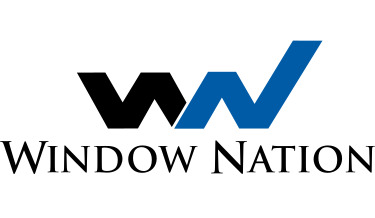Key takeaways:
- What is a project estimate used for? It forecasts costs, provides quotes to clients, and helps track actual spending against budgets.
- How can templates assist in project estimation? They simplify expense breakdowns and can be customized based on project specifics and audience needs.
- What tools enhance project cost estimation accuracy? Project management software like Wrike helps forecast costs by consolidating historical data and tracking expenses in real-time.
- Why consider indirect costs during estimation? Indirect costs like rent and utilities can significantly impact the overall budget and should be included for accuracy.
- What features does Wrike offer for project management? Wrike allows for integration with other tools, employs AI for risk assessment, and enhances collaboration and visibility in project-related discussions.
When you’re planning a project, a project estimate allows you to:
- Forecast how much different aspects or phases of your project will cost
- Provide a quote for external clients or secure buy-in from your management
- Track real costs against your forecasts later in the project
To help you easily break down your relevant expenses, we’ve created a customizable project estimate template and rounded up four additional templates from across the web. We’ll also share some pointers on how to customize the template to suit your own needs.
When it comes to creating estimates, the challenge is not just to provide a comprehensive breakdown of expenses (which a template will help with). It’s also to provide an accurate forecast of those costs.
But no simple template will be able to do that for you.
Instead, your costs will be based on the type of project you’re working on, previous similar projects, the people involved, and other factors specific to your project. So, while many guides out there leave you to navigate these problems yourself, this guide talks you through how to forecast your project costs, too.
We’ll also suggest a more intelligent solution than doing it yourself: using project cost management software, like what you get with Wrike. With our platform, you’ll be able to accurately forecast project expenses, match projected costs to actual costs, and meticulously track spending as you go.
Your free customizable project estimate template
To get you started, here are two versions of a simple project estimate template that you can make your own. All you need to do is select the link, download it, and edit it for your own project:
The first project estimate template is for when you’re sending a project estimate out to a prospect, customer, or client. The second template is for an internal organizational project.
1. Project estimate template for a customer/client project
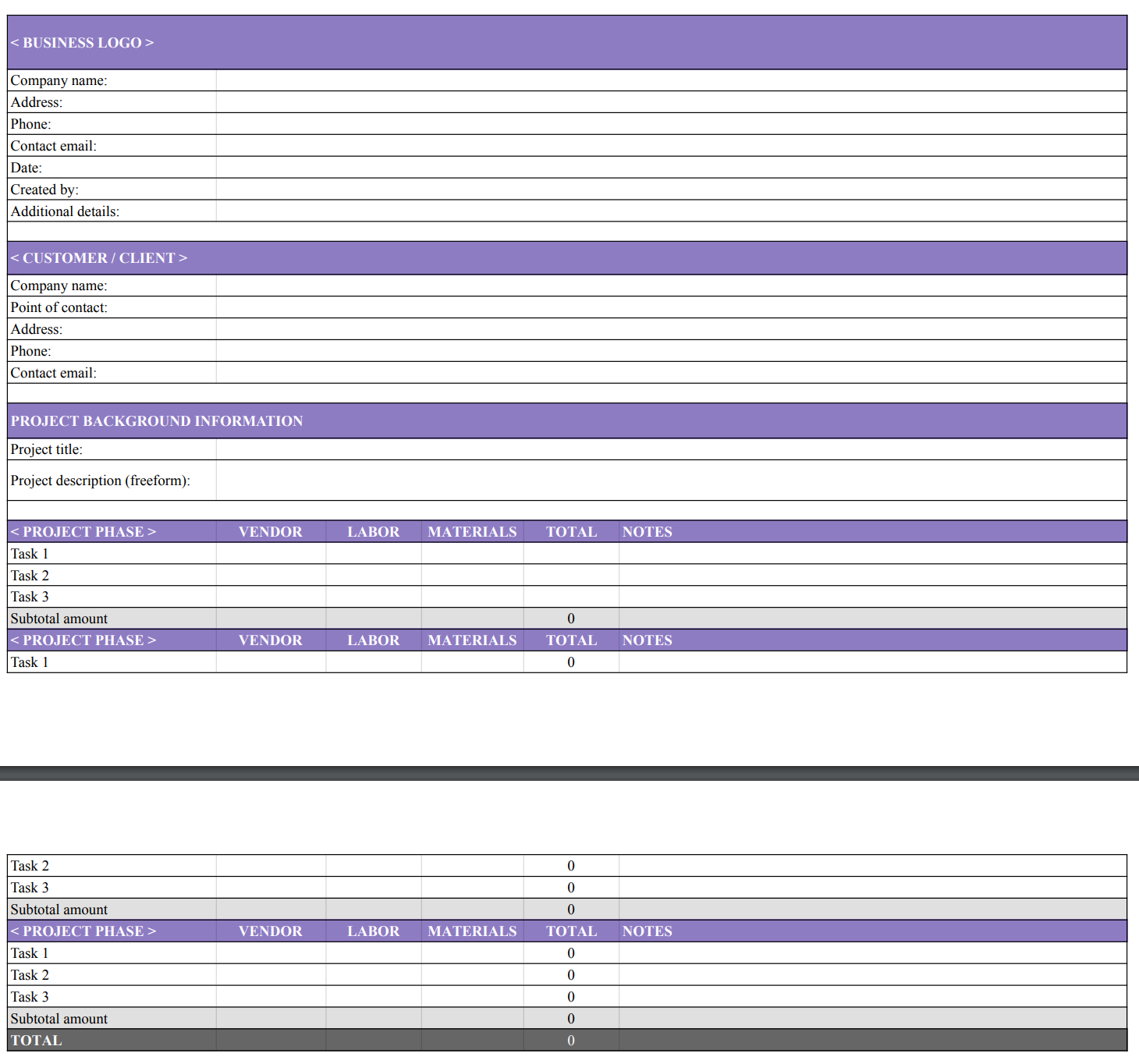
2. Project estimate template for an internal project
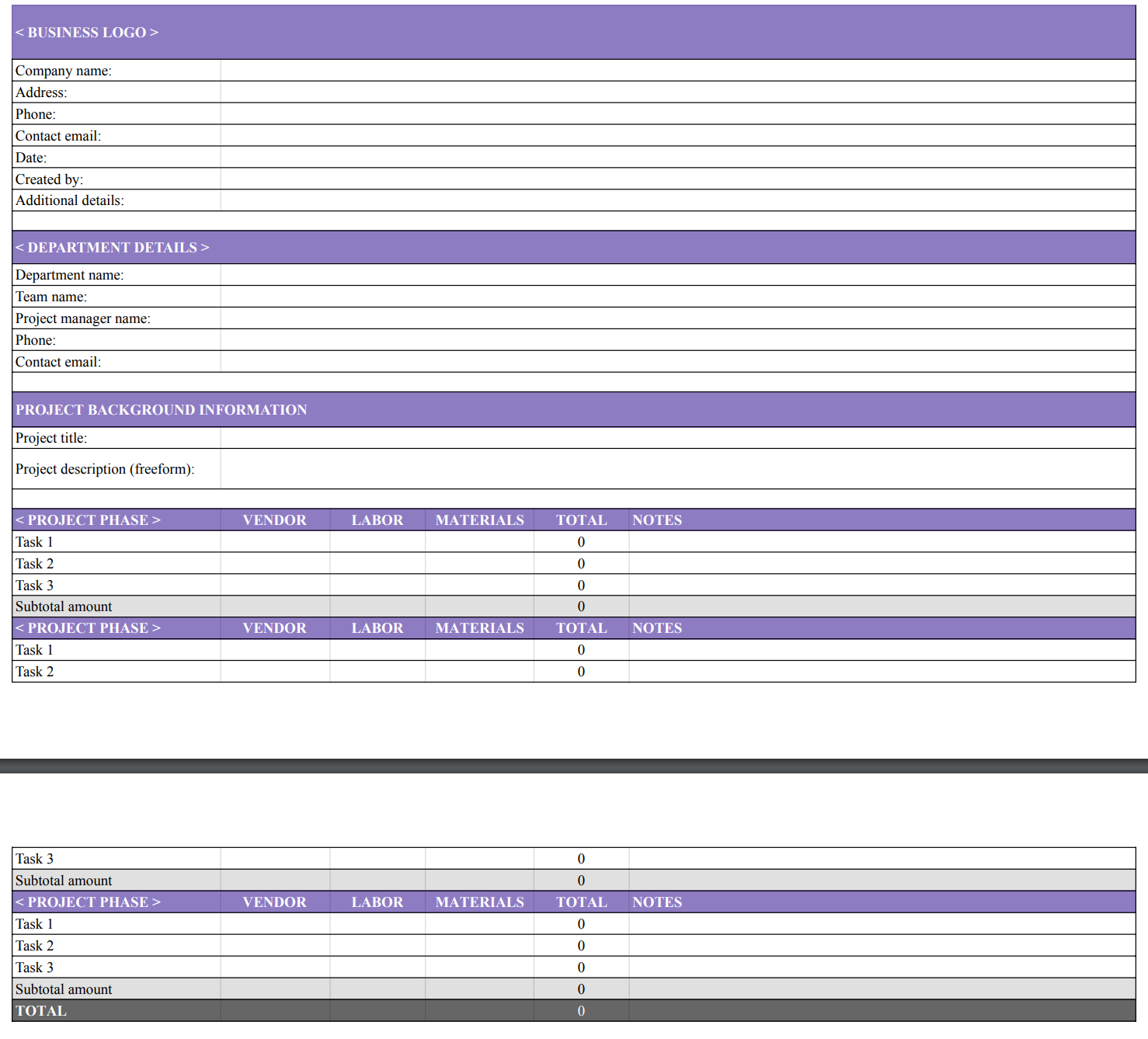
These templates will get you started, but you’ll need to customize them to your own needs.
Here’s how:
What to consider when customizing your project estimate template
Regardless of the template you use, your estimate will differ depending on your specific project. To ensure your document includes everything you need, ask yourself these questions:
Who is using your project estimate, and for what purpose?
Is this a document for your internal team to use to track costs throughout the project? Or will you present it to clients? This will make a difference to what you include in your document.
For instance, if you’re sharing it externally, you’ll need to include branding, your client’s address, and possibly a space for a signature. If you’re using the estimate internally as a reference for actual costs, you may want additional space to include those expenses.
How will you structure your project?
How you structure your work will affect how you present your various expenses. So, you may choose to break down your project into different phases, which you’ll estimate separately. Or, you may prefer to think in terms of individual tasks, which you may estimate in the form of labor hours.
It’s useful to base your project estimate on your work breakdown structure. This way, you can manage your costs in the context of your entire project.
Who is involved in the project?
Your project may involve only salaried people who are internal to your organization. Or, it may be completed by a range of contractors. Often, it can be easier to estimate costs that are outsourced, as you’ll typically have a fixed cost.
That said, you may want to include various quotations from external contractors in your project estimate. This will allow you to compare different estimates and give a more accurate projection of costs overall.
In the template above, it’s easy to add more columns if you need them and there’s a space for your own brand logo too.
Steps to take when estimating the cost of your project
So far, we’ve shared some of the critical considerations when customizing your estimate template. But you’ll notice that these questions won’t give you an insight into how much a project will actually cost.
In project planning, this is the real challenge, because it will be highly specific to your organization and the kind of work you do. Of course, it’s an estimate, not an exact science. But it’s important that your estimate is as accurate as possible, to ensure you stay on budget and satisfy your end clients.
Here are some ways that you can do that:
Revisit your cost data from any similar previous projects
Your previous projects are the most reliable guide to your current project’s cost. These will tell you not only how much a similar project might cost, but also how long it might take, who might need to be involved, and what tasks need to be completed.
Any mistakes, mishaps, or delays from previous projects are important data for this project’s estimate, too. Did it take longer than you expected? Did you spend less than you had estimated? Did you require additional resources that will be relevant again this time? All of this information will help you refine your estimate and make it as accurate as possible.
Consider providing a range of estimates
There are various methods for calculating estimates for a project, which will depend on the type of project and your preference. The most common is the top-down approach, which assumes an end deadline and assesses the tasks necessary to meet that deadline. So, if a project needs to be completed in six months, how much would it cost for you to finish it in that time?
While this technique might be necessary in some cases, it’s not always the most accurate approach — particularly if you’re new to estimating project costs. Another technique to consider instead is three-point estimation. For every task, you’ll need to set three possible estimations for its duration and cost: pessimistic, most likely, and optimistic. You’ll then add each of these to your estimate template.
Unsure which approach to take? Check out our guide to project estimation techniques.
Don’t forget indirect and variable costs
The direct costs — i.e., the costs of labor and materials — are usually quite straightforward to estimate. But you should also ensure that indirect costs, such as rent, fuel costs, or utilities, are covered too. Obviously, these can change, so it’s important that you don’t simply use the equivalent costs from previous projects.
As you can see, the real challenge in project estimation is not drawing up the document, but accurately calculating the project costs. Whether you’re using an Excel template or a Word doc, you’ll almost certainly be doing those calculations manually.
That said, there is an easier solution: Wrike.
How Wrike makes project cost estimation easier
Wrike is a project management tool used by thousands of organizations to plan, manage, and report on the work they do. Our platform can support all aspects of your work management, including helping you estimate your project costs and budgets.
With Wrike, you can do away with an Excel template and manage your project costs in a much more dynamic and accurate way. And what’s more, you can rely on our software to provide the robust data and reporting tools you need to get a more reliable estimate of project costs.
Here’s what you can do with Wrike’s project estimating software:
1. Track robust project data for more accurate estimates in future
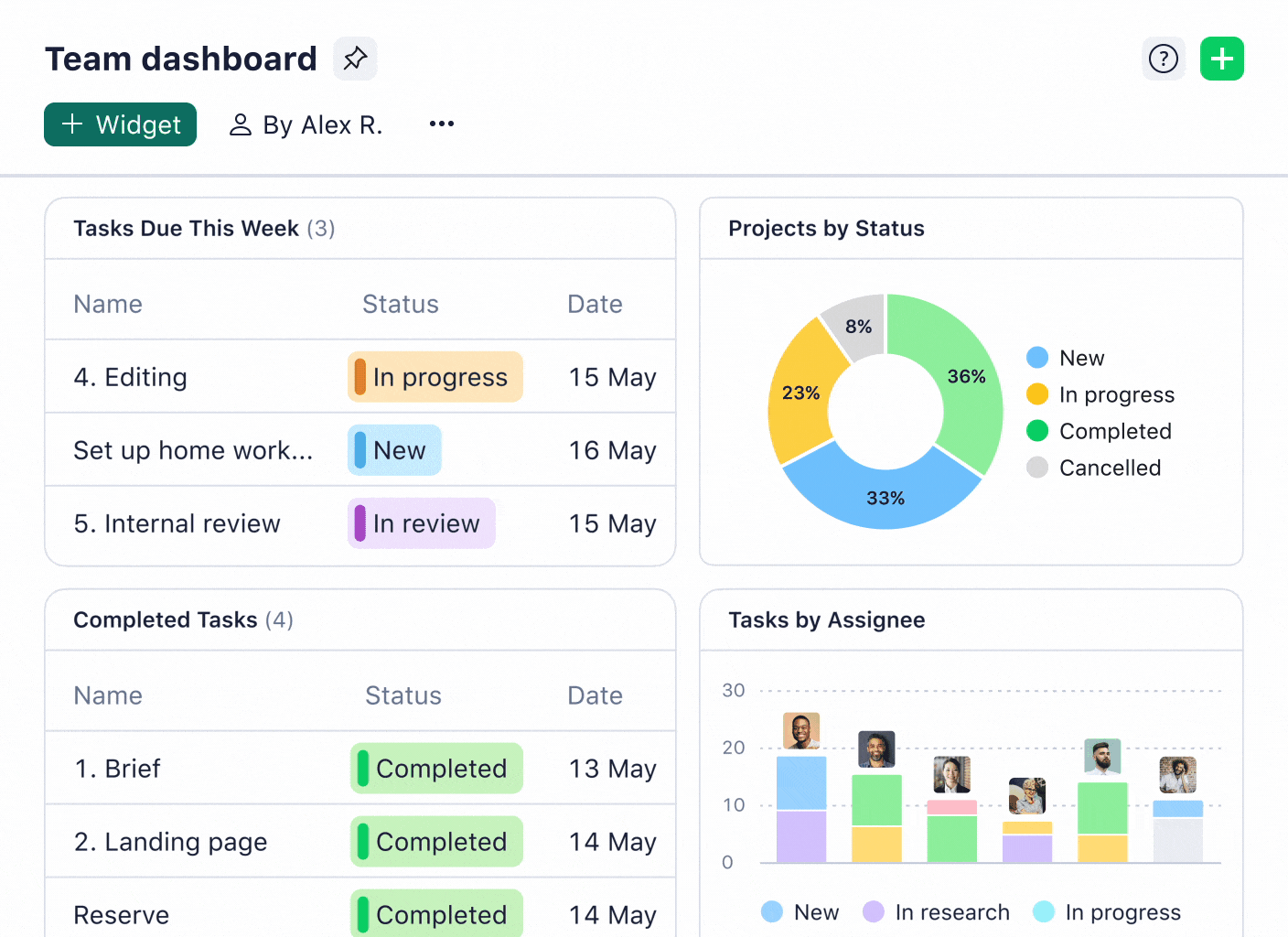
As we mentioned earlier, the most important resource when making project estimates is your information on previous projects. The trouble is that this can often be scattered across various tools and documents.
With Wrike, you have all the cost data you need on live and previous projects together in the same place.
- Get visibility on project finances, so you know exactly where you stand. Throughout your project and after completion, you can quickly access insights into projected and actual budgets, time spent, required resources, and much, much more.
- Create prebuilt or custom reports in a matter of clicks. Our reporting tools bring together key insights from your various projects, so you can understand exactly what’s going on in your organization — and accurately estimate new projects.
- Predict future outcomes based on historic trends. Through Wrike’s personalized dashboards and interactive widgets, you can get an insight into the projects and trends that will affect your work going forward.
Wrike offers all the data you need at your fingertips to accurately estimate the requirements of future projects. Not only will you make more accurate project estimates, but you’ll save time on planning projects, too.
In fact, this data is one of the things that the Japanese company JERA loves most about Wrike.
“To gather useful data, the management department [previously] had to tally and transform the data each time for reporting purposes, resulting in long processing times,” says Tomonori Sato of Jera’s ICT Strategy Department.
“Using Wrike’s business intelligence function, we’ll be able to centrally visualize project information and related financial data. If we can do this, we will be able to make scientific decisions based on data — not only about the actual status of each project, but also about the probability of a project’s success and the appropriate scale of investment.”
2. Forecast risk and speed up work using Wrike Work Intelligence®
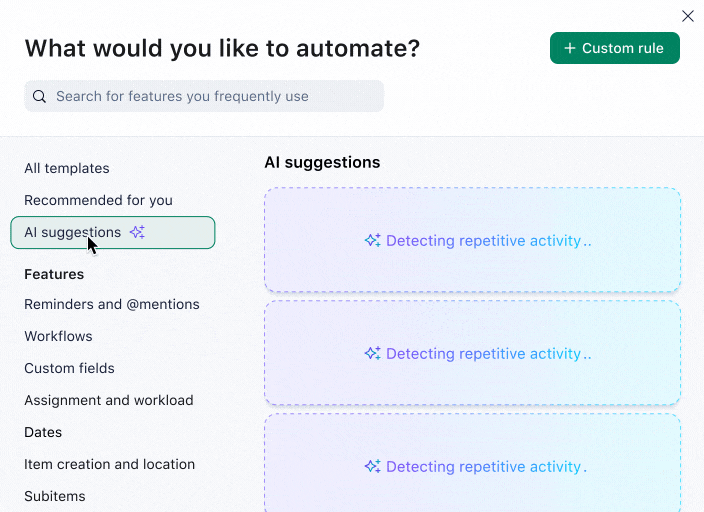
No matter how well you plan it, any project can face disruption, delay, and rising costs. That’s why understanding these risks — and preparing for them — is a critical part of project management.
With Wrike, this is easy, particularly with the help of Work Intelligence, our AI-powered solution.
- Use AI to understand risk based on previous projects. Wrike’s risk prediction feature can quickly identify historic patterns and frequent issues. Based on this data, it can highlight which projects are most at risk, so you can redirect resources to those that need them most.
- Leverage automation to save time (and money) on manual tasks. If you’re regularly performing repetitive tasks, Wrike’s AI will suggest these as opportunities for automation. It provides personalized suggestions for areas where you can save money and time.
Window Nation is one company that uses Wrike’s AI to improve the way it manages projects.
“[Before Wrike,] I had no way of anticipating how long something would take,” says De Lisa Patterson, Window Nation’s Creative Director.
“Before the integration of AI, I often found myself spending a considerable amount of time manually analyzing project timelines, assessing task dependencies and determining the optimal sequence of tasks, and then following up with staff members.”
Now, it’s a different story. “Wrike’s AI tools ultimately drive better outcomes for our team and the organization as a whole.”

Wrike’s AI features have become indispensable in my daily workflow, enabling me to accomplish more in less time and with greater accuracy.
De Lisa Patterson, Creative Director
3. Integrate project cost management with your entire project plan

When you’re creating a separate estimate file, project estimates and ongoing costs can get siloed from the rest of your project information. This becomes just an additional document to juggle — and you’ll likely be wasting valuable time copying the data you need across.
Wrike provides a central source of truth for your work, so you can get full visibility over everything that’s relevant to your projects.
- Get a comprehensive, customizable view on your project. Personalize how you want to see your shared projects, individual workloads, and project reports with Wrike’s customizable project visualizations. For instance, you can choose between Gantt charts, Kanban boards, or calendar views, or select the data widgets that matter most to you.
- Integrate with other tools to bring all your work together. When you’ve finalized your project estimate, simply send it to the client via Wrike. Or, once you’ve completed the project itself, automatically generate an invoice through QuickBooks. Wrike boasts over 400 native integrations (and many more custom integrations) so that you can seamlessly work across many different tools.
- Discuss your project within Wrike. Using Wrike, you don’t need to flick to a separate app to discuss or make comments on a colleague’s project estimate. Simply have those conversations within our project management platform instead, with commenting, review, and approval features.
4 more project estimate templates from across the internet
- Microsoft’s free budget templates: While they’re not strictly for project estimates, Microsoft has shared a variety of Excel templates for budgeting.
- Excellence in Financial Management’s project cost estimating workbook: This is a detailed workbook for the process of estimating a budget (Excel download).
- Construction Log’s free construction bid estimating template: This useful tool is for companies working specifically on construction projects.
- Washington State Department of Transportation’s design analysis estimating template: This comprehensive template helps to unify communication on project costs (Excel download).
Use Wrike for more accurate cost management
In this guide, we’ve shared some project estimate templates that you can use to present cost forecasts for your projects.
However, if you want to calculate your project budgets from scratch, a template alone won’t help. Instead, you need a tool that can provide you with robust data on your historical project costs and risk, so you can get an accurate view of your project performance overall.
Wrike can do exactly that. Book a demo to find out how it can work for you.



